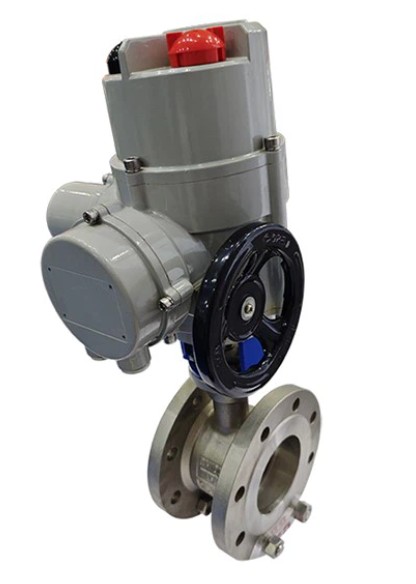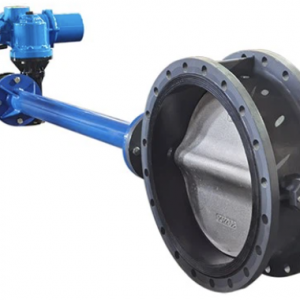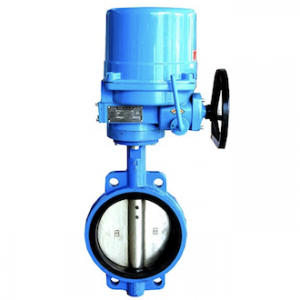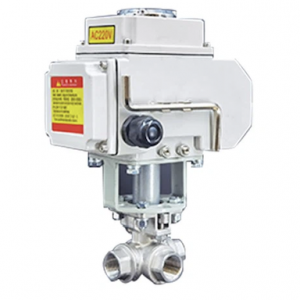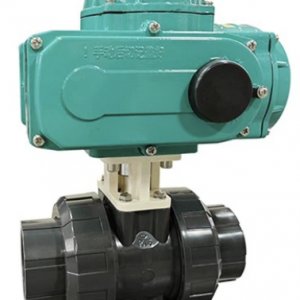Description
The DN100 V Port Cut Off Ball Valve has a simple structure, consisting of only a few parts, and saves material consumption; it is small in size, light in weight, small in installation size, and has a small driving torque.
Product parameters
Electric ball valve
Brand: Freya
Product specifications: DN40, PN10
Origin: Tianjin
Material: cast steel
Applicable scenarios: steel, metallurgy, building materials
technical data
The electric ball valve has a simple structure, consisting of only a few parts, and saves material consumption; it is small in size, light in weight, small in installation size, and has a small driving torque. It is a pressure regulating valve that is easy and quick to operate and can be quickly opened and closed by rotating 90°. It also has good flow regulation function and closed sealing characteristics. In the application range of large and medium calibers, medium and low pressures, the electric ball valve is the dominant valve form.
Temperature
-20C to +150C (+250C with special seal).
Pressure
PN16, PN25 - PN40 - PN64 -PN100
Diameter
DN32 - DN800
Main features
① Integral valve body
The integral valve body without any pipe joints is not affected by the stress of pipes or bolts, and since the valve body has no pipe joints, the pressure-resistant shell will not be affected by the "sudden change" of pressure
② V-port valve body
The electric ball valve has a V-port valve body, which can ensure the accuracy of control within the entire range even in the case of small flow or high viscosity media
③ O-type sealing ring
The leak-proof and durable valve seat of the electric ball valve is lined with a PTFE cup or O-type sealing ring with a stainless steel inner core on its outer diameter. The valve seat is made of tungsten-cobalt hard alloy with a larger cross-section, and the structure of the valve seat is further strengthened by an alloy corrugated spring
④ V-port notch
When the electric ball valve is closed, a wedge-shaped shearing effect is generated between the V-port notch and the electric ball valve seat, which has both self-cleaning function and can prevent the ball core from getting stuck. The electric ball valve is particularly suitable for pipelines with scale freezing or containing fibers and granular solids.
Structural features
① Prevent misoperation
Locking holes are provided at the fully open and fully closed positions of the valve to prevent misoperation by non-staff members.
② Prevent abnormal rise
A step is provided at the bottom of the valve stem to prevent the valve internal pressure from abnormally rising and causing the valve stem to fall out
③ Sealing
A fire-resistant sealing ring is provided between the ball and the valve seat, and the valve seat still has a sealing effect after being burned
④ Product features
Quick switch, flexible opening and closing, long service life, safe and reliable
⑤ Remote control
The electric ball valve can be centrally controlled from a distance and can meet the needs of computer program control
Installation Check
1. After installation, start the ball valve to open and close several times. It should move flexibly, be evenly stressed, and work normally.
2. According to the pipeline pressure design requirements, test the sealing performance of the joint surface between the ball valve and the pipeline flange after pressure is passed.
Common faults
Type:
A typical failure of electric ball valves, safety valves, a spring between the stem and a body mounted on the actuator acts on its gate valve to reciprocate and urge the gate to one position, which may be closed, and the control fluid is applied to the piston in the stem to overcome the spring force in the actuator, thereby maintaining the other position normally in the open position, so as to maintain the control condition for a long time, when this structure valve is abandoned at a large depth, and the pressure of the body drops significantly below the surrounding sea surface pressure, the electric ball valve spring must be large enough to close the valve due to the pressure of the body on the stem is not enough to move the gate to its failure position. In extreme cases, it may occur. Thus reducing the size of the actuator increases the depth rating of the valve.
Elimination method:
Failures caused by electric ball valves, which are included in this category, the valve body has a through structure and a cavity intersecting the gate of the traditional valve, the cavity between the positions open and closed, and the actuator responsible for moving the gate between these positions. As is also the case with this type of valve, the actuator includes a hood mounted on the valve body with the valve stem connected to the other valve.
Maintenance methods
1. Only when the pressure before and after the ball valve is removed can the ball valve be disassembled and decomposed.
2. During the disassembly and reassembly process of the ball valve, it is necessary to protect the sealing parts, especially the non-metallic parts. It is best to use special tools for parts such as O-rings.
3. When reassembling the ball valve body, the bolts must be tightened symmetrically, step by step, and evenly.
4. The cleaning agent should be compatible with the rubber parts, plastic parts, metal parts and working media (such as gas) in the ball valve. When the working medium is gas, gasoline (GB484-89) can be used to clean metal parts. Non-metallic parts are cleaned with pure water or alcohol.
5. The individual parts that have been disassembled can be cleaned by immersion. Metal parts with non-metallic parts that have not been disassembled can be scrubbed with a clean, fine silk cloth soaked in cleaning agent (to avoid fiber shedding and adhering to the parts). When cleaning, all grease, dirt, glue accumulation, dust, etc. adhering to the wall must be removed.
6. After cleaning, non-metallic parts should be removed from the cleaning agent immediately and should not be soaked for a long time.
7. After cleaning, the cleaning agent on the washed wall surface should be evaporated (it can be wiped with a silk cloth that is not soaked in cleaning agent) before assembly, but it should not be left for a long time, otherwise it will rust and be contaminated by dust.
8. New parts must also be cleaned before assembly. 9. During assembly, metal debris, fiber, grease (except for specified use), dust and other impurities, foreign matter, etc. should not be allowed to contaminate, adhere or remain on the surface of the parts or enter the inner cavity.
